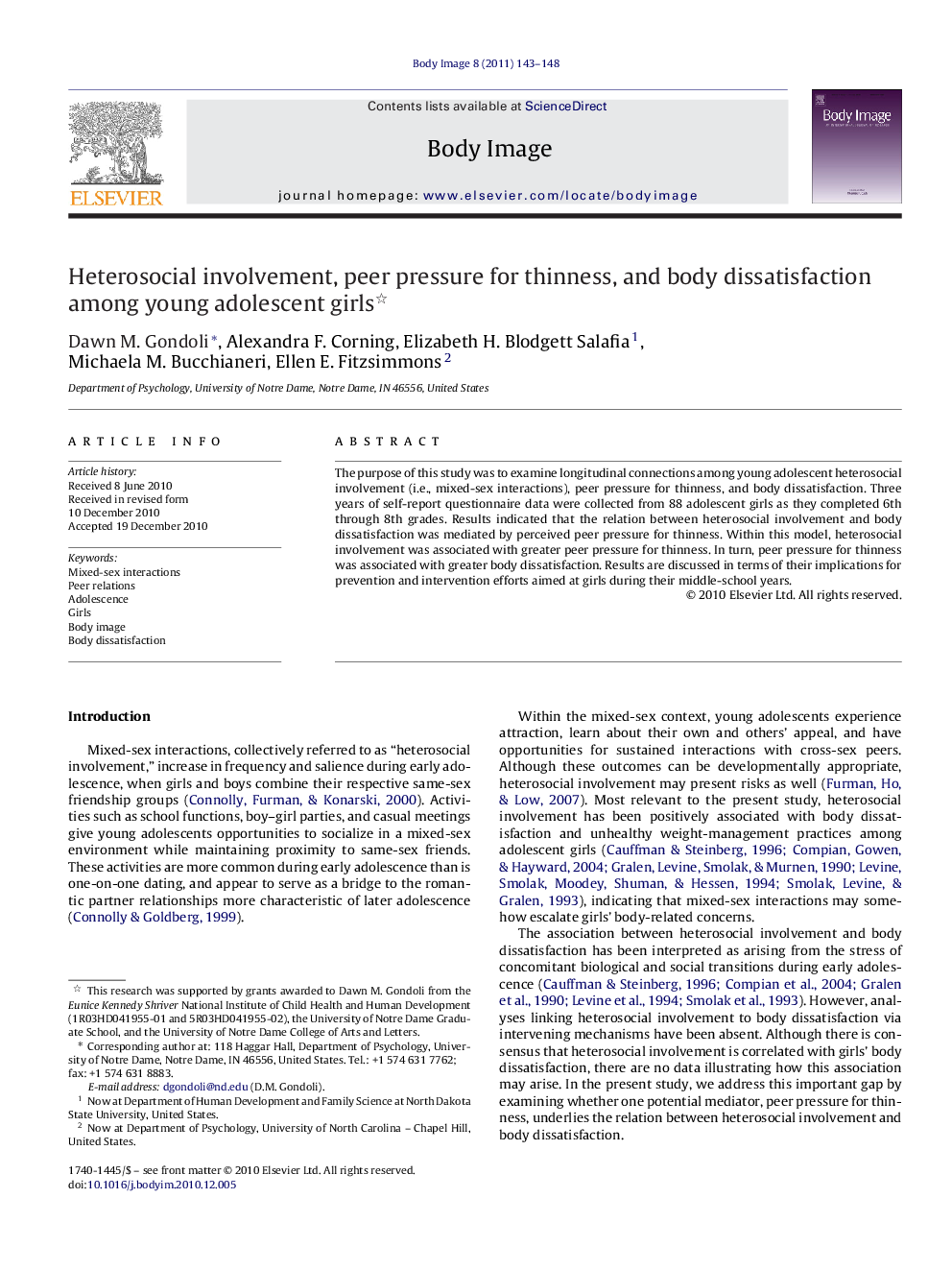The purpose of this study was to examine longitudinal connections among young adolescent heterosocial involvement (i.e., mixed-sex interactions), peer pressure for thinness, and body dissatisfaction. Three years of self-report questionnaire data were collected from 88 adolescent girls as they completed 6th through 8th grades. Results indicated that the relation between heterosocial involvement and body dissatisfaction was mediated by perceived peer pressure for thinness. Within this model, heterosocial involvement was associated with greater peer pressure for thinness. In turn, peer pressure for thinness was associated with greater body dissatisfaction. Results are discussed in terms of their implications for prevention and intervention efforts aimed at girls during their middle-school years.
Mixed-sex interactions, collectively referred to as “heterosocial involvement,” increase in frequency and salience during early adolescence, when girls and boys combine their respective same-sex friendship groups (Connolly, Furman, & Konarski, 2000). Activities such as school functions, boy–girl parties, and casual meetings give young adolescents opportunities to socialize in a mixed-sex environment while maintaining proximity to same-sex friends. These activities are more common during early adolescence than is one-on-one dating, and appear to serve as a bridge to the romantic partner relationships more characteristic of later adolescence (Connolly & Goldberg, 1999).
Within the mixed-sex context, young adolescents experience attraction, learn about their own and others’ appeal, and have opportunities for sustained interactions with cross-sex peers. Although these outcomes can be developmentally appropriate, heterosocial involvement may present risks as well (Furman, Ho, & Low, 2007). Most relevant to the present study, heterosocial involvement has been positively associated with body dissatisfaction and unhealthy weight-management practices among adolescent girls (Cauffman and Steinberg, 1996, Compian et al., 2004, Gralen et al., 1990, Levine et al., 1994 and Smolak et al., 1993), indicating that mixed-sex interactions may somehow escalate girls’ body-related concerns.


